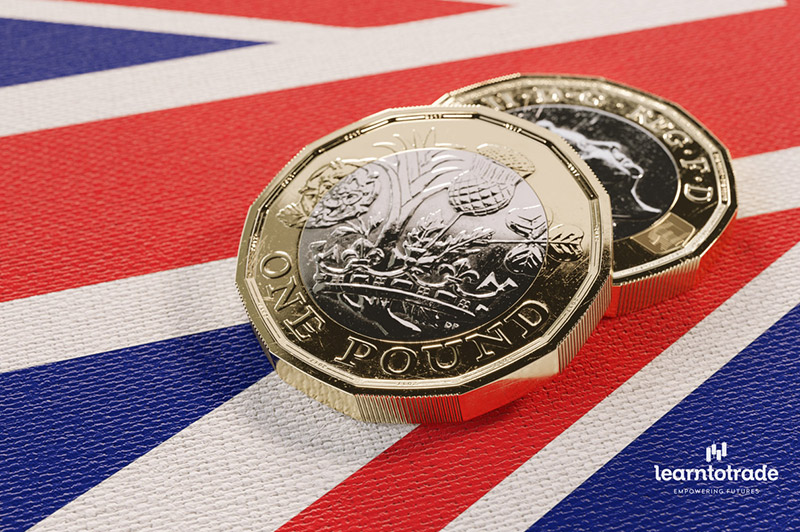Sterling: Can crunch Brexit meeting knock the pound off course?

The pound is the currency to watch for the rest of this week as the UK government meets on Friday to decide on its final economic plan for Brexit. This includes tinderbox topics such as the UK’s single market access and Customs Union membership after Brexit in March 2019.
Already a sizeable group of Brexiteer rebels have said that the Tories will be “toast” if they fail to agree on a clean break from Brussels after 2019. A softer Brexit stance may assuage market concerns, particularly the Brexit-sensitive pound; however, any bounce post the meeting on Friday could be short-lived. If Theresa May openly defies the Brexiteers they may do her in once and for all, and a leadership contest in this environment could be one of the most pound-negative events so far this year.
The pound stuck in the crosshairs
The UK currency is stuck between the crosshairs of continuing Brexit uncertainty on the one hand, and increasing economic optimism on the other. There was further good news for the economy this week, with the UK Service Sector PMI growing at its fastest rate for 8 months. This caused a jump in Gilt yields and GBPUSD jumped above 1.3200. The bounce in the service sector comes after good news for the manufacturing and construction sectors’ earlier this week, which suggests that the UK economy is making a comeback at the end of Q2. This is strengthening the case for a rate hike from the Bank of England when it meets in early August. The interest rate swaps market jumped on the back of the UK service sector data; it is now pricing in a 67% chance of a rate hike next month, up from 61% earlier this week.
Upbeat Carney boosts the sterling
Mark Carney, Governor of the BOE, rather than dampen expectations of a rate hike, especially with so much Brexit uncertainty flying around, fired up the markets with an upbeat assessment of the UK economy and excusing the first quarter’s weak performance on weather-related issues in a recent speech. The fact that the market seems to have made up its mind that an August rate hike from the BOE is incoming, may have also tempered Carney’s more dovish instincts, which is pound positive in the short term. The BOE Governor was more concerned with Trump’s China tariffs and the impact on world trade, which suggests that Brexit concerns could take a backseat to Trump trade wars in the coming months.
Can the World Cup save the pound?
Where does this leave the pound? Life above $1.3250 for GBP/USD looks shaky in the near term, especially with Brexit risk and US non-farm payrolls on the horizon, even though a hawkish Carney could see an attempt at 1.3250 opening the way to 1.33. On the other hand, a dovish Carney combined with decent US labour market data could see the dollar roar back to life and send GBPUSD hurtling back towards 1.3150 then 1.3070 from late June. When it comes to the pound, we also can’t rule out the World Cup effect, could a victorious England in the next two weeks be positively correlated with currency performance? The boost it could give to the economy may lead to some uplift for the pound, but it’s best not to get too ahead of oneself when it comes to the England team and World Cup performance.
Trump tariffs could keep US stocks subdued
US indices were closed on Wednesday and put in a lacklustre performance on Tuesday. We expect them to come back to life as the US tariffs on Chinese goods come into effect on Friday. Trump has been quiet on this in recent days, mostly targeting European automakers, but a key development came from China on Tuesday when an official said that there would be no retaliatory tariffs on US goods. This seems to contradict what Beijing was saying in June, however, it could lessen any market nervousness as we lead up to Friday and protect US indices from further sharp losses in the near-term.
Trade wars leave the S&P 500 vulnerable
Any escalation in the trade war theme may cause the S&P 500 to drop back to the 2,650 level in the coming months. This can’t be ruled out, especially since the Citibank US economic data surprise index continues to drop, which has a good correlation to both the US 10-year Treasury yield and the S&P 500. With economic data appearing to top out at the same time as Trump’s tariffs look set to be expanded and the Fed is hiking interest rates, it could be a tough H2 for the US stock markets. In the next couple of days, expect investors to be nervy, as the deadline for US tariffs on Chinese goods gets closer.
In the immediate term, US labour market data is expected to show another healthy 200k rise for June. The unemployment rate is expected to remain steady at 3.8%, while annual hourly earnings are expected to tick up slightly to 2.8% from 2.7%. Any disappointment in the figures is likely to be blamed on Trump’s tariffs causing jitters in corporate America, which could trigger a larger than expected sell off in risk at the end of this week.






































